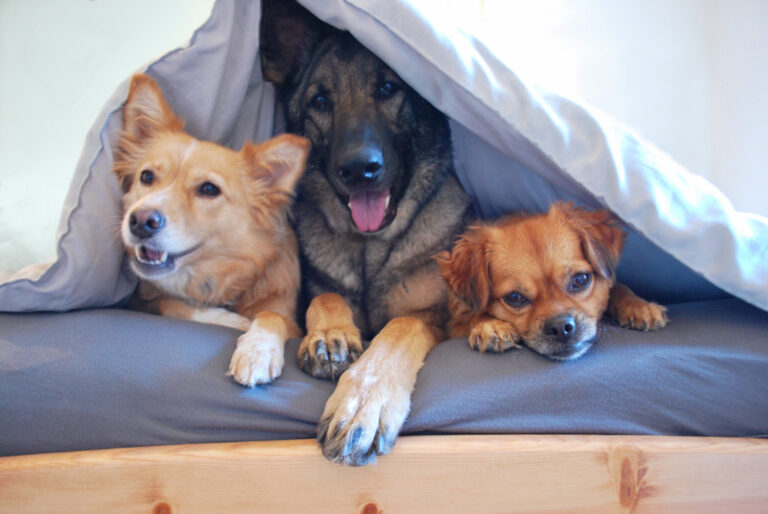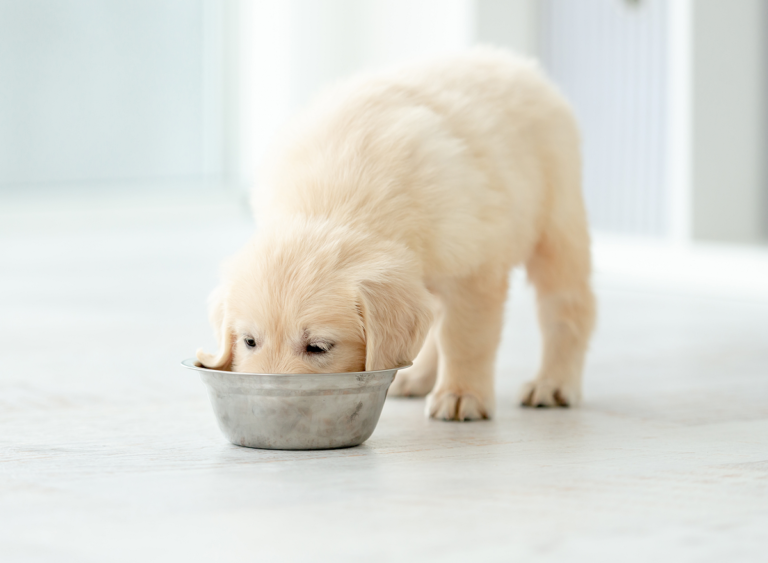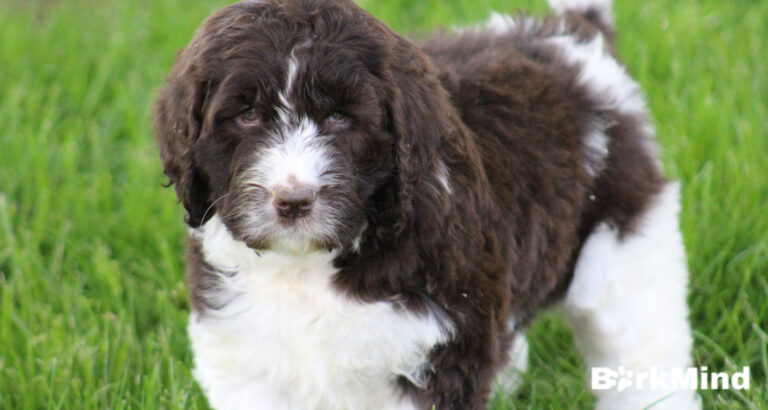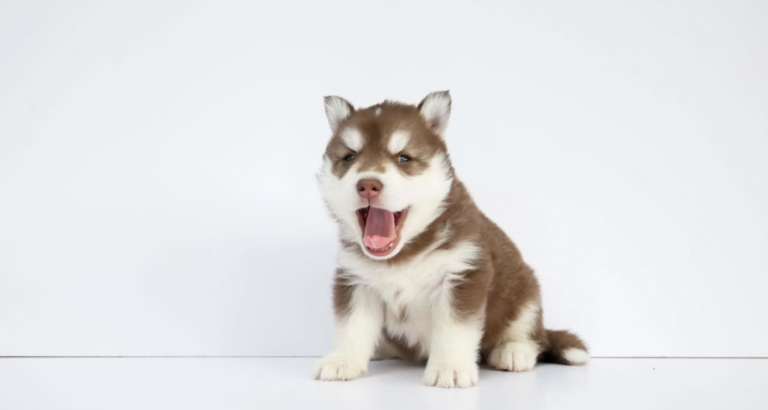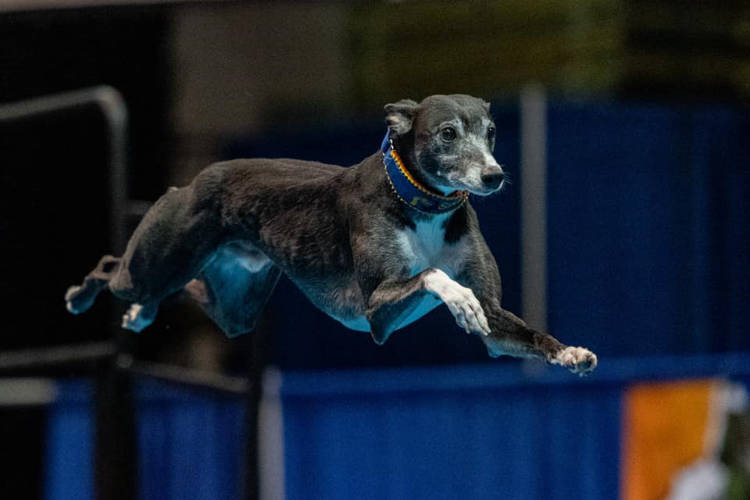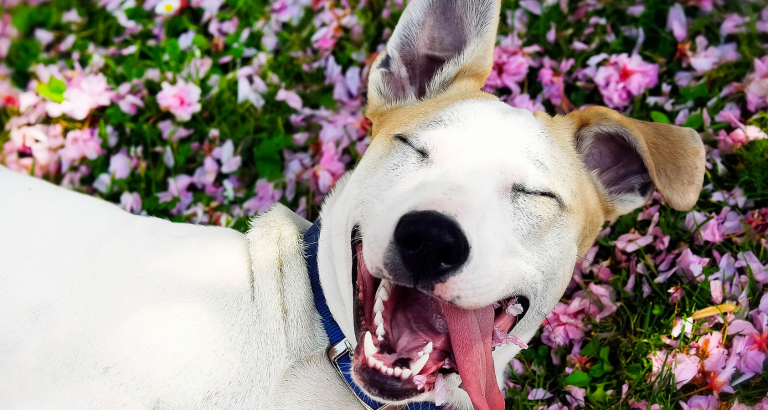Great Pyrenees Lab Mix – The Complete Guide to Pyranees Lab Labrador
Last updated on October 21st, 2023 at 06:31 am
Reading Time: 25 minutesThis post may contain affiliate links. If you click and buy we may make a commission, at no additional charge to you.
What is the Great Pyrenees Lab mix?
The Great Pyrenees Lab mix is a strong and popular hybrid breed created by crossing a purebred Labrador Retriever with a purebred Great Pyrenees. This mix is often known as a Pyrador, a Lab Great Pyrenees Mix, or a Labreenes. Both parent breeds have been registered by the AKC, with the Great Pyrenees being registered in 1933, and the Labrador in 1903. The Pyrador is growing in popularity among lovers of the parent breeds due to its combination of genetic, temperament, and physical traits. This mix is bred as a family pet, and can make a great companion if given enough space, exercise, training, and socialization. However, they may inherit some health and temperament issues from either parent, so it is important to research both breeds before deciding if this mix is a good fit for you.
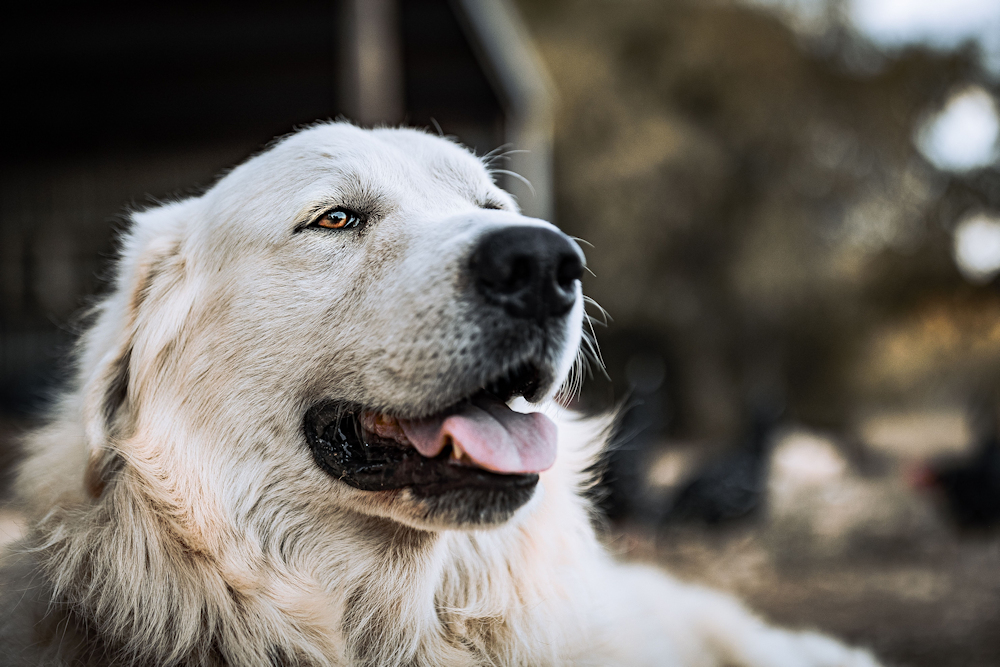
What to consider when adopting a Great Pyrenees Lab mix
1. Temperament
The Great Pyrenees Lab Mix is a hybrid breed that combines the traits of both its parent breeds. It is a gentle and affectionate companion that loves to spend time with its family and is particularly fond of kids. It is an intelligent breed that is easy to train and can learn new things quickly. It is an active breed and needs plenty of physical exercise and mental stimulation in order to stay happy and healthy. As a watchdog, it can be more active at night and struggle to settle down and sleep in the evenings, so it is important to provide it with the right amount of activity and attention. With the right kind of upbringing, the Great Pyrenees Lab Mix is an excellent companion for active lifestyle families.
2. Appearance
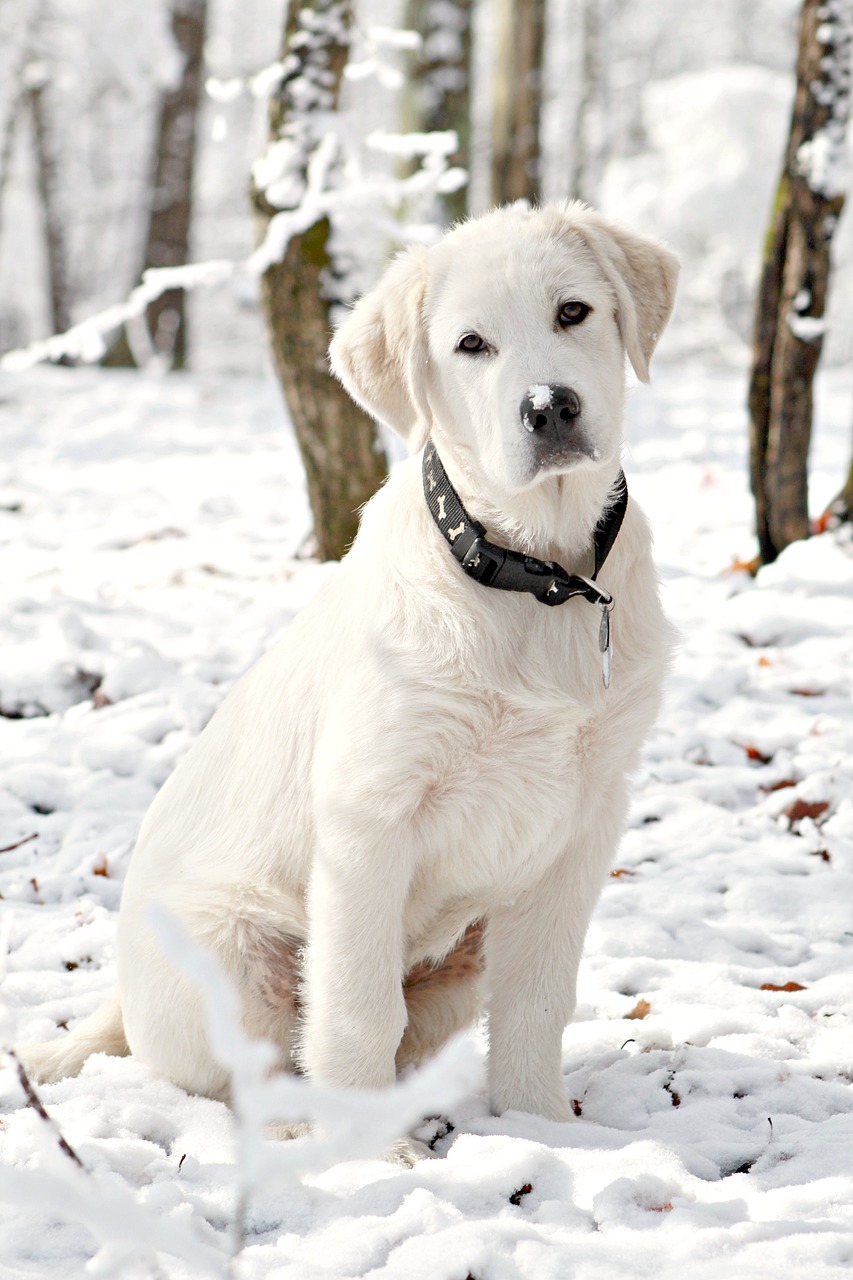
When adopting a Great Pyrenees Lab Mix, there are many physical traits to consider. Male Pyradors are usually larger and heavier than their female counterparts, reaching heights of up to 32 inches and weights of up to 115 pounds. They have a broad head and wide and deep muzzle, along with a black nose and brown or hazel eyes. Their ears are long and triangular, and their tail is long and thick. The coat of the Great Pyrenees Lab Mix is double-coated and medium to long in length, with a variety of colors such as black, white, yellow, and chocolate. They are also heavy shedders, so regular grooming is necessary to maintain the coat. They also have moderate exercise needs, but can be high-energy at times. Finally, the Great Pyrenees Lab mix is loyal, intelligent, and good with children, making it an excellent family pet.
3. Health
What are the health considerations when adopting a Great Pyrenees Lab mix? [Compare and contrast]
Both the Great Pyrenees and the Labrador Retriever are susceptible to certain health issues, so when considering a Great Pyrenees Lab mix, it’s important to be aware of their potential health issues. Great Pyrenees are prone to Hip & Elbow Dysplasia, Joint Problems, Obesity, Skin Problems, and allergies. Labradors are susceptible to Hip & Elbow Dysplasia, Progressive Retinal Atrophy, Eye disorders, and Exercise-Induced Collapse.
Thankfully, there are measures that can be implemented in order to reduce the likelihood of experiencing these health issues. These include obtaining a health assurance from the breeder and offering your Great Pyrenees Lab mix a nutritious diet and ample physical activity.. Additionally, providing your Pyrador with mental stimulation and regular check-ups with your vet can help ensure that any potential health problems can be caught early and managed effectively.
4. Grooming
The Great Pyrenees Lab Mix requires regular grooming to keep their thick, fluffy double coat free of dirt and matting. To care for their coat, you should brush it gently with a wide-toothed comb to remove any tangles or mats. You should also bathe them using a mild shampoo (not human shampoo) and make sure to rinse thoroughly. After bathing, you should use a towel to gently pat their fur dry or use a hair dryer on the low setting (being sure not to hold it too close to their skin). Lastly, you should trim their nails using a nail trimmer designed for dogs, or have a professional groomer do it. You should also invest in a deshedding tool to keep their coat and your house free of hair. Additionally, you should clean their ears twice a week to prevent infections or a buildup of wax. (see grooming tools below in point 15)
5. Energy Level
The Great Pyrenees Lab Mix is an energetic and playful dog that loves to have a good time. It requires around 60 minutes of exercise every day to stay healthy and happy, including long walks and vigorous play. Labradors, on the other hand, are more athletic and high-energy. They need a lot of interactive and high-intensity activities to fulfill their energy requirements. In comparison, Great Pyrenees dogs are calmer and patient, better suited to endurance and long steady walks.When it comes to energy levels, the Great Pyrenees Lab mix may inherit traits from either parent. However, regardless of that, they will still need approximately 60 minutes of physical activity every day through longer walks and more intense play sessions. Therefore, the energy level of a Great Pyrenees Lab mix is higher than that of a Great Pyrenees, but lower than that of a Labrador.
6. Trainability
A Great Pyrenees Lab mix is an intelligent breed that is eager to please their owners. They have the potential to be very easy to train, much like their Lab parent, but can also be independent due to their Great Pyrenees influence. Training should be a positive and fun experience for both the dog and the owner, and proper socialization and training should be provided. Classes and obedience training can help the Great Pyrenees Lab mix to learn basic commands, good manners, and learn how to behave around other dogs. With proper socialization and training, the Great Pyrenees Lab mix can become a well-behaved and loving companion for any family.
7. Intelligence
When adopting a Great Pyrenees Lab mix, it’s important to consider the intelligence of both parent breeds. A Lab is considered one of the most trainable dog breeds, as they are eager to learn and love to please. On the other hand, the Great Pyrenees has a more independent mindset and prefers to think for themselves rather than follow commands.
Therefore, if adopting a Pyrador, it is best to begin training from an early age, before the six month mark, so that the independent streak doesn’t become too strong. Never use punishment when training a Pyrador, as Labs are sensitive and it could cause unexpected behavior. Positive reinforcement and lots of praise should always be used instead.
Finally, inquiring into the parents’ personalities can help give an idea of the range of possible temperaments the Pyrador may have. While the Great Pyrenees Lab mix is generally a warm and welcoming companion, it is still important to socialize and train them early, especially when children are in the home.
8. Shedding
The Great Pyrenees Lab mix has a thick double coat and sheds moderately throughout the year. It sheds heavily twice a year during the typical shedding season in Spring and Fall. Therefore, the average shedding rate for the Great Pyrenees Lab mix is moderate.
9. Temperament toward other dogs
The Great Pyrenees Lab mix is typically friendly and great with families and children, so it is likely to be good-natured and friendly towards other dogs as well. With proper socialization, the Great Pyrenees Lab mix should be able to develop good relationships with other canine companions. This mixed breed is not naturally aggressive and won’t act out unless it is provoked or feels threatened. With a combination of both parent breeds’ temperaments, the Great Pyrenees Lab mix is likely to be an easygoing, loyal, and loving companion for any family.
10. Socialization
The socialization of a Great Pyrenees Lab mix is an important part of ensuring that your pup will grow up to be a friendly, well-adjusted companion. Socialization should start as early as possible, and involve introducing your puppy to different people, places, animals, and things. This will help to reduce the risk of fear-based aggression as an adult dog.
It is also important to provide training from a young age. This includes puppy classes, obedience training, and basic house training. These activities will help your dog learn how to behave around others, and will ensure that they develop good manners.
In addition to formal training, you should also spend time teaching your Great Pyrenees Lab Mix good manners at home. This includes teaching them not to jump on people, not to beg for food, and to be gentle with their teeth.
Finally, you’ll want to take your pup to the dog park and introduce them to other dogs. This will help to ensure that your pup is comfortable around other canine companions and will help to prevent aggression towards them. With proper socialization and training, your Great Pyrenees Lab Mix should be a friendly and loyal family companion.
11. Alertness
When adopting a Great Pyrenees Lab mix, it is important to consider their alertness. On the one hand, the Lab parent breed is known for its loyalty and trainability, making them an excellent companion. On the other hand, the Great Pyrenees parent breed is known for its protective nature and keen sense of alertness. This mix combines the best of both parent breeds, making them great family dogs. They are alert and attentive, while also being loyal and trainable. However, it is important to remember that this mix is a large breed and should be monitored around younger kids. They also need plenty of mental and physical stimulation to stay happy and healthy. Additionally, this mix is a natural guard dog and will be alert to any perceived threats or intruders. With the right amount of exercise and training, the Great Pyrenees Lab mix can be an excellent companion for families.
12. Energy Level
The Great Pyrenees Lab Mix is a highly energetic breed that needs plenty of activity and stimulation. They are active and outdoorsy, needing at least an hour of exercise each day, including long walks and vigorous play. This combination of parent breeds can also be great swimmers, which can provide an extra outlet for their energy. They are also highly alert and makes for an excellent watchdog. Compared to other breeds, the Great Pyrenees Lab Mix is a more active breed, requiring more exercise than the average pup. However, their energy levels can be managed and with the right amount of exercise and mental stimulation, the Great Pyrenees Lab Mix can make an excellent companion for an active family.
13. Endurance
The Great Pyrenees Lab Mix is a strong and popular breed that has been used for both working purposes as well as playing companions. While Labradors are more athletic and high-energy, Great Pyrenees dogs are calmer and patient, better suited to endurance. This makes the Great Pyrenees Lab Mix an excellent choice for families who are looking for a pet that can keep up with their active lifestyle.
They are blessed with some of the best endurance characteristics of both of its parent breeds. The Labradors’ athleticism and energy will give them the speed and agility to keep up with more active lifestyles, while the Great Pyrenees’ patience and calm demeanor make them well-suited to endurance activities, such as long and steady walks. The Great Pyrenees Lab Mix has the capability to excel at both high-intensity activities, such as running, as well as low-intensity activities, such as swimming. Regardless of the activity, they will need approximately 60 minutes of exercise a day to stay healthy and happy.
With the right amount of exercise and mental stimulation, the Great Pyrenees Lab Mix makes an excellent companion for active lifestyle families.
14. Health problems
What health problems are associated with adopting a Great Pyrenees Lab mix?
Potential health problems associated with adopting a Great Pyrenees Lab mix include: hip and elbow dysplasia, joint problems, obesity, skin problems, allergies, bloat, hypoadrenocorticism (Addison’s disease), centronuclear myopathy, exercise-induced collapse (EIC), dental infections, the dilute gene, eye problems, thyroid disease, cancer, and bone and joint issues.
15. Grooming Tools
When adopting a Great Pyrenees Lab mix, it is important to consider the grooming tools required to keep them healthy and looking their best. Tools such as a wide-toothed comb and a deshedding tool are essential for brushing their thick double coats. A mild shampoo should be used for bathing and a low-powered hair dryer can be utilized to dry their fur. Nail trimmers designed for dogs should be used to trim their nails, and care should be taken to not cut them too close to the quick. Finally, a good vacuum should be on hand to help keep the shedding under control.
16. Health Certificate
When adopting a Great Pyrenees Lab mix, you should ensure that you receive a health certificate that proves the dog has been tested for any potential health issues. This should include tests for hip and elbow dysplasia, joint problems, obesity, skin problems, allergies, and Progressive Retinal Atrophy (PRA). It is also important to check for any other potential genetic health problems that are known to occur in the breed. The breeder should provide a health guarantee on the puppy, and it is important to check their reputation before committing to the purchase.
17. Puppy Checklist
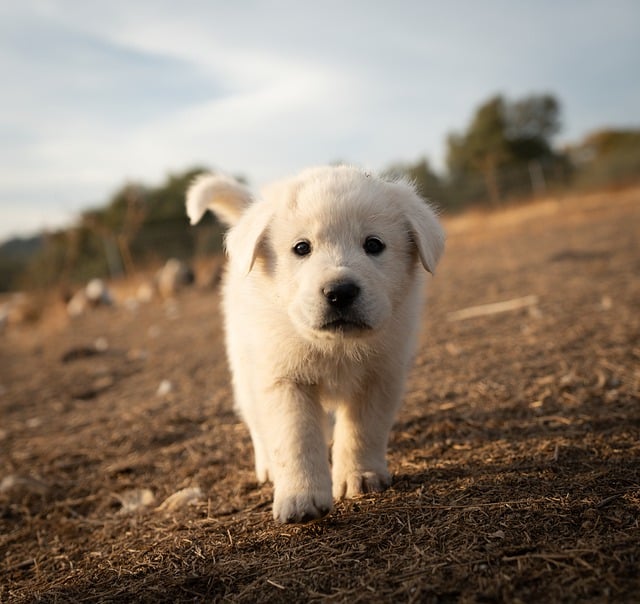
What are the puppy checklist requirements for adopting a Great Pyrenees Lab mix?
- Look into both parent breeds and their characteristics to understand the Great Pyrenees Lab mix temperament.
- Consider the size of the breed and make sure it fits your lifestyle and home.
- Make sure to provide your pup with its own dedicated area, such as a kennel or separate part of the home.
- Provide them with exercise, training, and plenty of love.
- Research and contact local rescue centers to find a healthy and happy Great Pyrenees Lab mix puppy.
- When bringing your pup home, make sure you have all the necessary supplies, such as food and water dishes, beds, toys, treats, leashes, and poop bags.
- Schedule regular vet visits to ensure your pup is healthy and up-to-date on vaccinations and other preventative care.
- Research and follow the breed-specific guidelines for grooming and coat care.
- Be prepared to commit to the long-term care of your pup.
More about the Labreenes Puppies
18. Swimming Excursions
Swimming excursions are an excellent way to provide physical and mental stimulation for Great Pyrenees Lab Mixes. Swimming not only helps to keep them active, but it is also low impact and can reduce the risk of developing joint and bone problems. Some of the best swimming activities for Great Pyrenees Lab Mixes are:
- Swimming in a pool or lake
- Participating in dock diving competitions
- Participating in doggie paddle races
- Swimming with a trainer in a pool
- Joining a doggy paddle club
- Visiting a water park specifically for dogs
- Going for a wading walk in a lake or river
- Taking part in water therapy.
19. Inheritance
The Great Pyrenees Lab mix is a hybrid dog breed, meaning it inherits traits from both parent breeds. Their coat can vary in length and thickness, resembling either the Lab’s shorter coat or the Pyrenees’ long and thick coat. It can also come in a range of colors, such as solid yellow, black, or chocolate like a Labrador retriever or white/off-white with markings that resemble badger, gray, tan, or reddish brown like a Great Pyrenees.only is this breed a great family pet, but it is also a great guard dog due to its protective nature. It is registered with the Dog Registry of America, but not the American Kennel Club.
20. Lab Breed Breed Standards
The Great Pyrenees Lab Mix is a hybrid dog breed that combines the traits of both its parents, the Great Pyrenees and the Labrador Retriever. They have an average height range of 22.5-32 inches for males and 21.5-29 inches for females and an average weight range of 65-100 lbs for males and 55-85 lbs for females. They have a thick, double coat that is usually white or cream in color, a broad head, wide and deep muzzle, black nose, brown or hazel eyes, long and thick tail, and long, triangle and floppy ears.
The Great Pyrenees Lab Mix is known for being patient, calm, outgoing, playful, brave, protective, guard-dog, eager to please, easy to train, loyal, intelligent, and a good family pet. They are hypoallergenic and child-friendly, and make excellent companions. They have an average lifespan of 10-12 years and require moderate grooming and exercise. They are not officially recognized by the American Kennel Club (AKC), but they are registered within the Dog Registry of America (DRA).
Tips on how to raise a happy and healthy Great Pyrenees Lab mix puppy
1. Invest in Puppy Care Products and Supplies
If you are preparing to bring a Great Pyrenees Lab mix puppy into your home, there are certain products and supplies you should invest in to ensure they have a happy and healthy life. These include indestructible dog toys, a dog bed for chewers and bed eaters, a dog ramp for SUV and large vehicle owners, a dog pool for Labradors and other large breeds, large dog beds, and dog toys for large breeds. Additionally, you should look for breed-specific products, dog toys and treats, training products, dog gift packs, DNA and health testing, and AKC magazines, pedigrees, breeder reports, and competitor reports. Finally, make sure to choose a responsible breeder who only breeds from dogs with clear health checks, and make sure to attend regular veterinary health checks, provide your pup with a good quality diet, and the right amount of exercise.
2. Socialize Your Puppy from an Early Age
Socializing a puppy from an early age is important for a Great Pyrenees Lab mix puppy since it can help to drastically reduce fear-based aggression as an adult. It also helps them to grow up to be confident and happy in any situation and teaches them to be obedient and follow commands. Socializing a puppy involves introducing them to a variety of places, people, animals and things, so that they can become used to new experiences. This is important for a Pyrador since their protective instincts mean that they can have a tendency to be guarded and potentially aggressive. By socializing them regularly, they will learn to be at ease in new environments and be less likely to display aggressive behaviour. Socializing a puppy also helps them to become well-socialized with other animals and people, which can help to prevent problems in the future. Overall, socializing a puppy from an early age is beneficial to the health and wellbeing of the Great Pyrenees Lab mix, and can help to create a happy and well-rounded pup.
3. Train Your Puppy Proper Behaviour
Step 1: Start training early. Invest time into your Pyrador’s training regime from day one to ensure it grows into a well-balanced and polite family addition.
Step 2: Socialize your puppy. Introduce your puppy to as many new environments, people, things, and animals as possible to reduce the risk of fear-based aggression.
Step 3: Establish a pack leader. Ensure the whole family is onboard and that one person, such as yourself, acts as the pack leader. Be firm with your puppy and set boundaries, but be positive and patient.
Step 4: Enroll in a puppy class. Puppy classes are designed specifically to teach basic obedience commands and are a great way to socialize your pup.
Step 5: Teach good manners. Spend time teaching your pup not to jump on people, not to beg for food, and to be gentle with their teeth.
Step 6: Offer rewards. Offer rewards, such as treats and vocal praise, to reinforce good behaviour and encourage your pup to learn.
Step 7: Monitor your pup. Monitor your pup carefully to ensure it isn’t displaying signs of separation anxiety and that it is behaving appropriately.
4. Give Your Puppy Lots of Attention
It is extremely important to give your Pyrador puppy lots of attention. Not only will it help to strengthen the bond between you and your pup, but it is also vital to help with their training and socialization. Daily walks, visits to the park, and lots of playtime are all essential for your puppy’s development. Socialization in particular is essential to prevent fear-based aggression, as the Great Pyrenees parent is known for its protective instincts. On top of this, Pyradors can suffer from separation anxiety if left alone for too long, leading to destructive behavior. Therefore, giving your puppy lots of attention is key to ensuring they become a happy and well-adjusted adult dog.
5. Provide Your Puppy with plenty of Exercise
Exercise is essential for a Great Pyrenees puppy in order for them to grow into healthy and happy adults. An hour a day is the minimum amount they need to thrive. On top of this, they should be joining you on outdoor adventures such as hiking and swimming. Puppies should have their activity limited, with five minutes of play for every month of age. For an adult Great Pyrenees Lab mix, a minimum of 60 to 90 minutes of exercise per day is recommended. This includes long walks as well as vigorous play and even mental stimulation to keep their brains healthy. Exercise is not only important for their physical health, but also their mental wellbeing. Without adequate exercise, they may become bored, leading to unruly and aggressive behavior. Therefore, having a large, safely enclosed yard and dedicating time for exercise with them each day is key for their health and overall growth.
6. Make Sure Your Puppy has a Proper Diet
A proper diet for a Great Pyrenees Lab mix puppy should include a high-quality dry food specifically designed for large puppies, with meat as the primary ingredient. It should also include small meals 2-3 times a day, rationing the daily recommended amount for its age. Additionally, it should include fish oil, glucosamine, and chondroitin supplements to support healthy joint development. Finally, it is important to avoid overfeeding, starchy carbohydrates, and grains to prevent weight gain and mobility issues.
7. Stay Up to Date on Your Puppy’s Health Care Needs
When caring for a Great Pyrenees Lab mix puppy, it’s important to stay up to date on their health care needs. This includes regular veterinary health checks, giving them a good quality diet, and the right amount of exercise. You should also take care of their joints as they are developing, and keep their nails clipped if necessary. Additionally, it’s important to stay informed about the latest information on dog health, nutrition, training, dog sports, and dog breeding through newsletters from the American Kennel Club.
8. Consider Having Your Puppy Microchipped
It is very important to microchip your Great Pyrenees Lab mix puppy for a number of reasons. First, microchipping your puppy will help ensure that your pup can be returned to you if they are ever lost or stolen. This is especially important since Pyradors are a mix breed and there may not be a way to identify them outside of their microchip. Additionally, microchipping your Pyrador puppy is a good way to ensure your pup’s health and safety. By registering them with a service like AKC Reunite, you can quickly access their medical records and contact information if they ever fall ill or are injured. Finally, microchipping your Pyrador can be a great way to give them a sense of security, as the chip can provide a permanent connection to you and your family.
9. Research the Mix of Your Puppy’s Breed
- Research both the Great Pyrenees and Labrador Retriever breeds. Take note of the common issues each breed is prone to, such as health conditions and behavioral problems.
- Look for reputable breeders that specialize in the Great Pyrenees Lab mix. Ask the breeder what health tests they have done on their breeding dogs and what health issues have surfaced in the puppies they have bred.
- Ask your veterinarian for advice on how to best care for your puppy.
- Provide your pup with a high-quality diet and plenty of exercise.
- Have regular veterinary health checks to ensure your pup is growing and developing properly.
- Read up on the Great Pyrenees Lab mix to understand what behaviors and traits the breed is likely to have.
- Visit forums and discussion boards dedicated to the Great Pyrenees Lab mix to learn about the experiences of other owners.
10. Consider Adopting Instead of Breeding
Adopting an adult Great Pyrenees Lab mix instead of buying a puppy from a breeder is beneficial for both the dog and the new owner. Not only do rescue dogs often come with a history of their temperament, personality, and behaviors, but this can be a great way to give an abandoned adult a second chance at life. Furthermore, due to the number of health issues that this mix can inherit from the Great Pyrenees parent, rescuing an older dog can be a good way of mitigating some of these potential issues. Adopting from a local, general dog rescue or a rescue specific to either of the parent breeds can help ensure that the dog in question has had all its necessary health checks, and is ready for a loving home. As such, considering adoption instead of breeding Great Pyrenees Lab mix puppies is an important way to make sure all dogs have a good home.
FAQ
What is a Great Pyrenees Lab Mix?
A Great Pyrenees Lab mix, also known as a Pyrador or Labreenes, is a crossbreed between a purebred Labrador Retriever and a purebred Great Pyrenees. It is one of the more recent mixed breed dogs growing in popularity among lovers of the parent breeds. These dogs typically possess the best of both breeds’ temperaments, physical traits, and genetic makeup. However, they may also be prone to certain health and temperament issues. The Great Pyrenees Lab mix is generally bred as a family pet and can make an excellent companion for an active home. They need plenty of space and exercise and require special training to make them excellent guard dogs. They are particularly fond of kids, but their size needs to be monitored and they need to be taught to be extra careful around younger children. Overall, this is an intelligent and loyal mix that can make a great addition to any family.
What are the pros and cons of getting a Great Pyrenees Lab Mix?
What are the pros and cons of getting a Great Pyrenees Lab Mix? [Compare and contrast]
The Great Pyrenees Lab mix is a popular hybrid breed, combining the intelligence and loyalty of both parent breeds. This mix can make a great family pet, but there are some pros and cons that should be considered before getting one.
Pros:
- Intelligent and loyal, making them great family dogs
- Natural guard dog instinct
- Friendly and loving personality
- Generally good with older children
- Easily trained
Cons:
- Not hypoallergenic, so may not be suitable for those with allergies
- Prone to barking
- Needs regular exercise, training and socialization
- May have trouble settling down and sleeping in the evening
- Large size may make them unsuitable for apartment living
What are the parent breeds of a Great Pyrenees Lab Mix?
The Great Pyrenees Lab mix is a hybrid crossbreed between a purebred Labrador Retriever and a purebred Great Pyrenees. The Labrador Retriever was first registered by the American Kennel Club (AKC) in 1903, while the Great Pyrenees was registered in 1933. Both parent breeds have been recognized and registered by the AKC. The Great Pyrenees Lab mix has the best of both parents’ genetic, temperament, and physical traits, but can also inherit some health and temperament issues from either one. This mix is bred as a family pet and is well-suited to an active, outdoor lifestyle. It is a big, beautiful, and soft dog which is loyal and trainable like a Labrador and protective and companionable like a Great Pyrenees. It is considered to be a designer dog and registered within the Dog Registry of America (DRA).
What is the temperament of a Great Pyrenees Lab Mix?
The Great Pyrenees Lab Mix is a hybrid breed that combines the temperament of both parent breeds. They are typically very friendly and great with families and children. However, due to their large size, they should be supervised with younger children and taught to be extra gentle and careful. This mix is easy to train as they are intelligent, although they may have some difficulty settling down and sleeping at night due to their parent breed’s natural watchdog tendencies. Studying the temperaments of hybrid animals can present difficulties because of their unpredictable behavior. Nonetheless, it is feasible to limit the possible outcomes by analyzing the personalities of their parents. This mix can be prone to independence, although with proper socialization and training they should have no problem getting along with other dogs. The Great Pyrenees Lab Mix is an energetic and playful dog that requires plenty of exercise and mental stimulation to stay happy and healthy. With the right amount of activity and stimulation, they make excellent companions for an active lifestyle.
How do I find a reputable breeder for a Great Pyrenees Lab Mix?
Finding a reputable breeder for a Great Pyrenees Lab Mix is an important step in ensuring that you end up with a healthy and happy pup. Here is a step-by-step guide to help you find a responsible breeder:
- Research: Do your research and make sure you understand the breed. Look for reputable breeders and read reviews from other dog owners who have purchased a puppy from them.
- Ask questions: Ask the breeder questions about their breeding practices, including the health and genetics of their dogs, any conditions their dogs may be prone to, and the conditions of the facilities they use.
- Visit the breeder: Visit the breeder’s facility and ask to see their breeding stock and puppies. Make sure the conditions are clean and the animals look healthy.
- Consider price: Understand the costs associated with purchasing a pup from a breeder. The price may vary based on the value of the parent dogs, availability of puppies, and any veterinary services they provide, such as spaying, neutering, and vaccines.
- Look for rescues: Consider looking for a rescue or shelter that specializes in the Great Pyrenees Lab mix. They may have puppies or adult dogs available for adoption.
- Start training: Start training and socialization as soon as you bring your pup home. This is essential for a well-behaved and balanced dog.
By following these steps, you can find a responsible breeder for your Great Pyrenees Lab Mix and give yourself the best chance of ending up with a healthy and happy pup.
What kind of health issues should I be aware of with a Great Pyrenees Lab Mix?
What kind of health issues should I be aware of with a Great Pyrenees Lab Mix? [Expanded list and Comparison]
It is important to be aware of the potential health issues that can arise in a Great Pyrenees Lab Mix, also known as a Pyrador. Both the Great Pyrenees and Labrador Retriever parent breeds can be prone to certain health problems that can be passed on to the hybrid dog.
From the Labrador parent, the Pyrador can inherit hip and elbow dysplasia, eye disease, centronuclear myopathy, dental infections, exercise-induced collapse (EIC), and the dilute gene.
From the Great Pyrenees parent, the Pyrador can inherit bloat, hypoadrenocorticism (Addison’s disease), bone and joint issues, eye problems, thyroid disease, and cancer.
Fortunately, Pyradors may show better resistance to these diseases due to their hybrid genetic status and broader pool of genes from two purebred parent dogs. To further support the Pyrador’s predisposition to better health, owners should make sure to provide proper nutrition and exercise starting at a young age. A high-quality diet full of animal-based proteins and limited grazing is important to help maintain a healthy weight and digestive system. Keeping track of their caloric intake and preventing them from begging for food from other people is also vital.
What is the exercise and grooming needs of a Great Pyrenees Lab Mix?
The Great Pyrenees Lab mix is a large dog with a thick, fluffy double coat. It requires regular grooming to keep its coat free of dirt and matting. To groom the coat, use a wide-toothed comb to brush and remove any tangles or mats. It should be bathed with a mild shampoo made for dogs. After shampooing, be sure to rinse thoroughly and dry its fur with a towel or low-setting hair dryer. The dog should also have its nails trimmed regularly using a nail trimmer designed for dogs, being careful not to cut too close to the quick.
The Great Pyrenees Lab mix is an outdoorsy dog that needs plenty of exercise. They require approximately 60 minutes of daily exercise, including long walks and vigorous play. It is important to provide sufficient exercise to ensure their health and overall growth remain on track. Depending on which parent they take after, they will be more high-energy or more chill. Labradors need interactive and high-intensity activities while Great Pyrenees are happy with long steady walks.
How can I ensure that my Great Pyrenees Lab Mix gets enough socialization and stimulation?
Step-by-Step Instructions:
- Provide adequate and consistent exercise. Take your Great Pyrenees Lab Mix for at least one formal exercise session each day for about an hour.
- Stimulate your dog’s mind by teaching them tricks and hand signals.
- Ensure that your dog has enough space to move around; they are not meant for apartment living and need a larger space with an outdoor area.
- Provide them with plenty of toys and games to keep their minds active.
- Start the training from a very young age to ensure that they follow your command.
- Incorporate the training of your dog to interact with unfamiliar individuals and other animals as an essential aspect.
- Introduce them to as many new environments, people, things, and animals as possible during their fear period (8 – 16 weeks).
- Provide rewards to your dog upon good behavior.
- Use a puppy sling to carry your dog around while they are still young and not fully vaccinated.
- Spend quality time with your dog every day, once their joints are fully developed.
What breed of dogs are related to the Great Pyrenees Lab Mix?
The Great Pyrenees Lab Mix is a hybrid breed of dogs created by crossing the Great Pyrenees and Labrador Retriever breeds. The Great Pyrenees is an ancient breed originating in North America and is believed to be descended from the Molosser dogs of ancient Greece. The Labrador Retriever is also an ancient breed that originated in Newfoundland, Canada in the 1700s. Both breeds are large, loyal, and protective, making them ideal guard dogs and working dogs. Breeds that are related to the Great Pyrenees Lab Mix include the Mastiff Lab Mix, Bassador, Pyrenean Mastiff, Lab Pointer Mix, Black Lab Australian Shepherd Mix, Goldador, Border Collie Lab Mix, and Black Lab Beagle Mix.
What is the average lifespan of a Great Pyrenees Lab Mix?
The average lifespan of a Great Pyrenees Lab Mix is 10-12 years. Both parent breeds also have an average life expectancy of 10-12 years, so you can expect your pup to live a similar lifespan. However, with proper care and nutrition, you can increase your pup’s likelihood of a long life. It is also important to be aware of some of the heritable health conditions that this mix may carry, such as tricuspid valve dysplasia, degenerative myelopathy, bloat, elbow and hip dysplasia, shoulder osteochondritis, factor XI deficiency, osteosarcoma, ectropion, entropion, progressive retinal atrophy, and skin issues.
About The Author
I'm a content writer and researcher. But bottom line, I loveee animals. I had my first animal which was a guinea pig at age 8. Later had a bunny, dog and a lot, a lot of fish. Writing about what I know about pets will allow me to share my knowledge and love for them with everyone else. Dealing with dogs my entire life, I know a lot.


